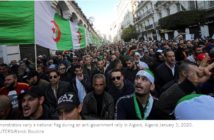HUFFPOST POLITICS

The victory of the Muslim Brotherhood’s Mohamed Morsi in Egypt’s presidential elections, and the strong showing of fundamentalist Salafis in legislative elections, completes a wave of Islamist electoral success that began in Tunisia and has swept the Arab world. One day soon, Islamist regimes may hold sway in an unbroken arc from Morocco to Turkey.
During the Arab Spring, the spotlight was dominated by secular urban activists. Religious conservatives lent quiet support, if at all. But those who make revolutions rarely benefit from them. The Arab Spring is a triumph of democracy, a shift from minority to majority rule. Less noticed is that it represents a victory for demography: the ascent of people power over military hardware. This point is tragically driven home by exceptions like Syria, where weapons continue to defy numbers. Yet raw populations are not always progressive forces: they may spawn nationalist and religious populisms which infringe on civil liberties.
The success of the Arab Spring in bringing democracy to the Arab world has rightly been celebrated. However observers need to realise that democracy and liberalism are only loosely related. The first refers to majority rule, the second to protecting the rights of individuals and minorities. James Madison and Alexander Hamilton warned in the Federalist Papers that there is always a potential for democracy to produce a tyranny of the majority.
The Arab Spring has created a situation in which mass sentiment counts as never before. Public opinion in many Arab states combines illiberal social attitudes with a democratic political stance. In Egypt, the UN’s 2009 Arab Human Development report revealed that 96% of Egyptian women aged 15 to 49 had undergone genital mutilation. In a 2005 ARDA youth survey, 94% of young Saudis favoured a system of government where ‘religious authorities have absolute power.’
Roughly 90% of Muslim respondents who support shari’a as the exclusive law of the land in the 2000 World Values Survey also preferred democracy over other systems of government. In effect, a mood of illiberal democracy prevails in much of the Arab Middle East.
Many in Arab countries emerging from dictatorship believe that secularists and minorities were protected by strongmen and their western allies. As politicians compete to embody the popular will, they may advance religious platforms that reduce safeguards for the marginal voices in society. The judiciaries whose task it is to uphold individual rights are weak and associated with a westernised elite. In Egypt, as in non-Arab Muslim states like Pakistan, liberal judges are being challenged by a new generation of upwardly mobile Islamists and may be unable to hold the line much longer.
Demography is key to this equation. Algiers, Casablanca, Tehran, Baghdad, Istanbul and Cairo, among others, long housed a politically-active secular middle class. This is the group that spearheaded most of the region’s revolutions, including the Arab Spring. Even the Iranian Revolution and abortive Algerian revolt benefited from secular liberal and leftist organising.
Yet these groups were defeated at the ballot box. A popular western perception is that Egypt’s secular parties lost because they are disorganized novices. This is only part of the story. Since the late twentieth century, population explosion in the pious countryside has flooded Muslim cities with migrants sympathetic to Islamism. The first phase of Islamic revival saw the Muslim Brotherhood thrive in the fertile soil of the Middle East’s expanding slums. Though they made dictators like Mubarak take notice, their influence in authoritarian contexts could only be partial. Democratisation, by contrast, translates the demographic heft of mass piety directly into political power.
This path is a familiar one. In the twentieth century United States, evangelicals increased from barely one-third of young white Protestants to nearly two-thirds. As Andrew Greeley, Mike Hout and Melissa Wilde demonstrate, high evangelical birthrates – mainly in rural southern heartlands – accounted for three-quarters of this growth. In the late 1970s, the Republican Party woke up to the potential of this large constituency. Today, no Republican candidate can afford to alienate evangelical voters. The same development, on a larger scale, is underway in Israel. The ultra-Orthodox have three to four times the birth rate of other Jews. They now form a third of Jewish first graders while religious zionists make up a growing share of the Israeli Defence Force’s officer corps. Ultra-Orthodox activists rip away faces of women on Jerusalem’s billboards and are challenging the legitimacy of the Israeli Supreme Court. Secular judiciaries such as Egypt’s are succumbing to Islamism as a new generation takes the reigns.
How will the combination of demography and democracy play out? The most likely development is the emergence of a region-wide, Saudi-style religious right. This conservative force may steer society away from freedom of expression and minority rights. There may also be foreign policy consequences. In countries like Egypt where authoritarian rulers enjoyed cordial relations with the United States or Israel, we may see a nationalist U-turn. A scenario in which Israel and its neighbors pursue cultural puritanism while behaving pragmatically is possible. Yet policymakers must also recognize that rival conceptions of sacred nationalism, buoyed by religious population growth, may be on a collision course. This makes it urgent to secure a Middle East peace deal while there is still time.






